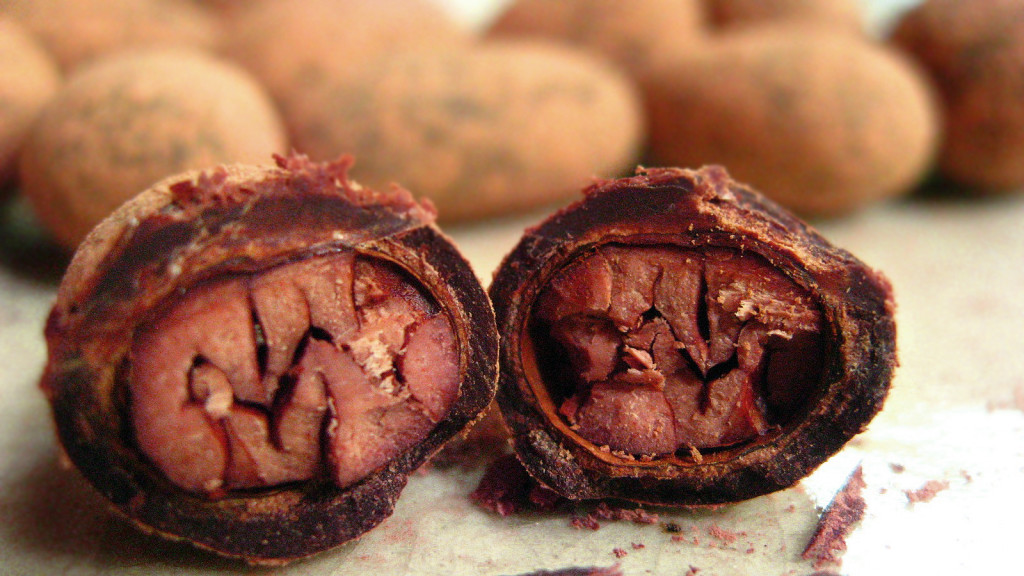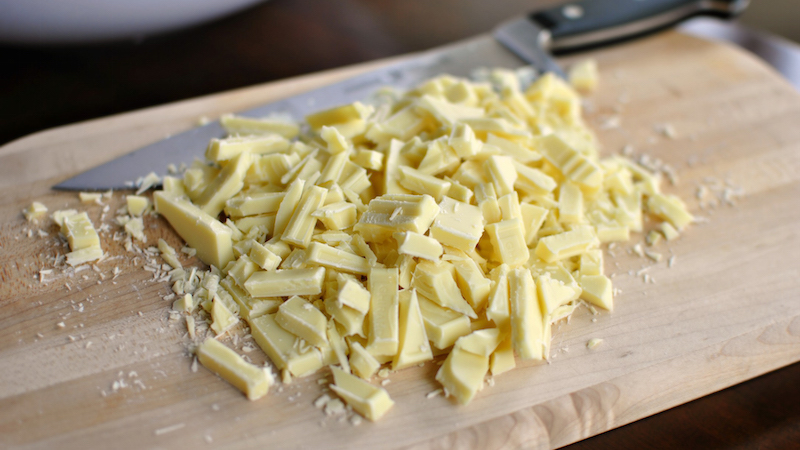Any sweet-toothed individual can attest to chocolate’s ability to raise spirits, and many healthy experts will confirm chocolate in moderation is actually healthy for you. It helps release serotonin, which supports a healthy mood, digestive system, memory, ability to sleep well, and even stamina.
With an array of chocolates on the market (ie: white, milk, dark, darker, etc.), I pose the question:
Do all types of chocolate effect us in the same way, and why?
The first, and probably most important fact, is the composition of the chocolate is key. Chocolate is made from two extracted portions of the cocoa bean. These are cocoa solids and cocoa butter. It’s these portions that contain the beneficial components of chocolate; however, chocolate as we know it only contains a portion of these ingredients.
White Chocolate
White Chocolate is produced using only a small amount of cocoa butter (for that chocolate essence), but is mostly comprised of milk and sugar. It’s obvious that milk contains calcium, so in that regard, yes, you are receiving some nutrition; however with the absence of more cocoa product, most will say white chocolate isn’t really chocolate at all… I’ll leave that debate for others, but what can be said is: White Chocolate is the least nutritious and beneficial on the chocolate spectrum. It also has the lowest melting point.
A general rule in melting chocolate: The lighter the chocolate the lower the melting point. White and Milk chocolate melt at about 86-90°F. You should never heat above 110°F or you risk burning the chocolate. Dark chocolate on the other hand, has a melting point of about 90-96°F, and can be heated to 115°F safely. Regardless the type of chocolate, the melting point is still below body temperature; hence, chocolate melts in your mouth.
Milk Chocolate
Milk chocolate can be considered the middle man of the chocolate kingdom. It contains a small about of cocoa butter and cocoa solids, but still, is mostly made using milk and sugar. This is a fact that makes milk chocolate what it is, rich, creamy, and sweet, but also makes milk chocolate very calorie dense and less nutritious than a more pure chocolate source, dark chocolate.
Dark Chocolate
Dark Chocolate is the most nutritious of the chocolates and that is because it contains the most cocoa product. In order to be classified as Dark Chocolate it must contain a MINIMUM of 70% cocoa, as opposed the very minimal amount of cocoa product in lighter chocolate.
You may have asked yourself earlier why I mentioned “dark” and “darker” chocolate, and that’s because dark chocolate can contain as little as 70% cocoa, but as much as 100% cocoa (baking chocolate). The higher the levels of cocoa the more pure and bitter the chocolate. The lower the percentage, the sweeter chocolate will be.
Regardless of your sweetness preference, the higher the cocoa percentage the more chocolate may offer nutritious benefits like an elevated mood and healthy heart function. It may also increase levels of serotonin, anti-oxidants, and is even proposed to reduce cancer risks.
Just know, chocolate, like everything, is good in moderation.









Hello Chef, I recently saw a video of your Maple Bacon Donuts but I cant seem to find the recipe…Please can you help me…thanks